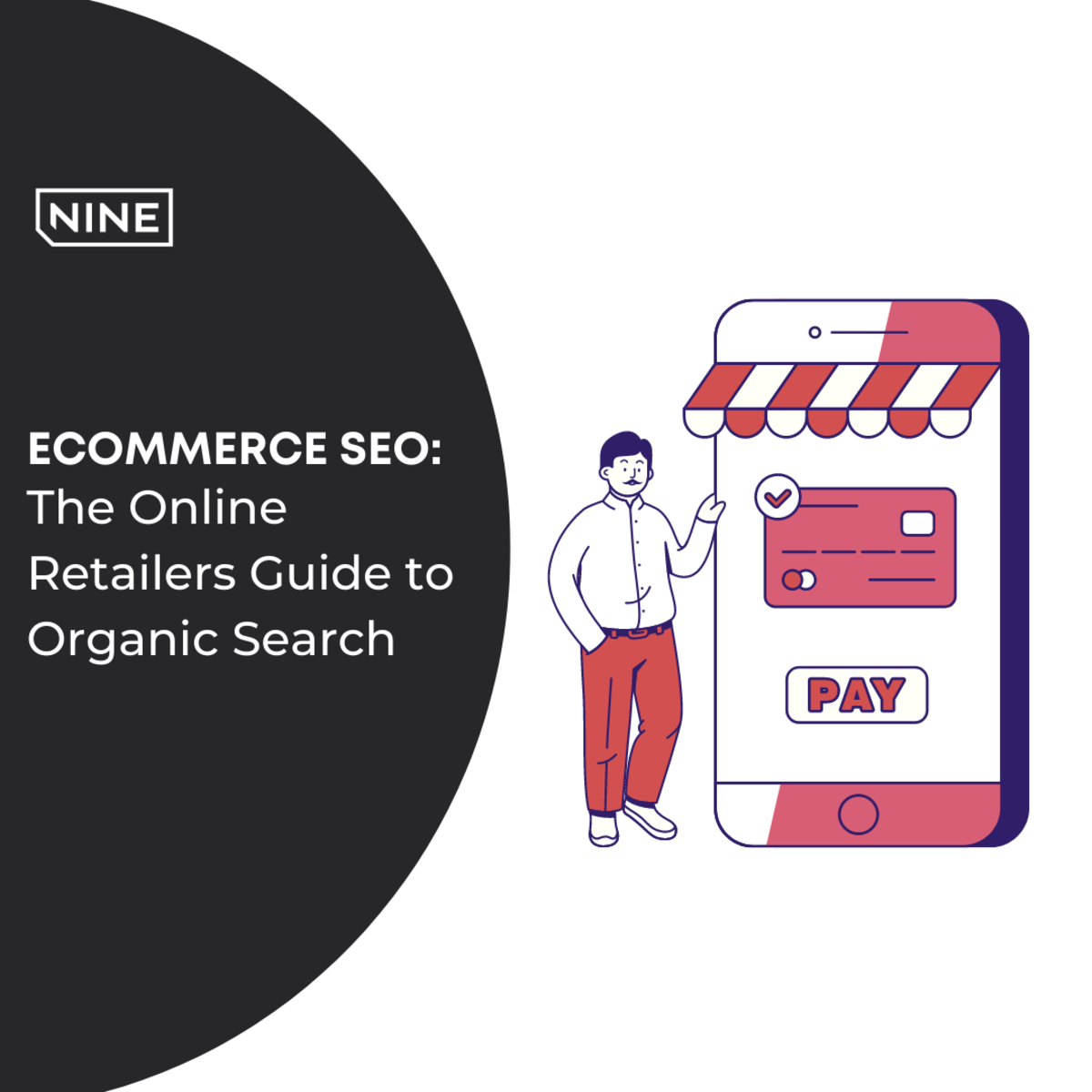
We are excited to say there’s more opportunity now than ever in the ecommerce space. However, the same ol approach of paid ads based on personalized data is no longer possible. Now, the best way to target your “ideal” customer is through ecommerce SEO.
While some thought Amazon would take over the world, other ecommerce businesses kept plugging along, continuing to look for opportunities to win new customers. Those paying attention noticed how Amazon (and others) did not “own” the top of the search engine. This lead to Google searches such as “how to do SEO for ecommerce sites”.
Yep, that’s a real search term with high volume. Maybe that’s how you got here? See how this all works?
Your online store will grow as long as an effective ecommerce SEO strategy is in place. This article contains the information you need to know to get to the top of the search engine.
Our ecommerce agency helps online stores grow their business through various forms of digital marketing, but we have a special place in our hearts for SEO.
Here’s what You Will Learn in this Complete Guide to SEO for ecommerce companies.
What is SEO ecommerce?
SEO stands for search engine optimization and includes various actions that will increase your rank in the search engine. For ecommerce companies, this includes the home page, category pages, product pages, and additional content such as blog article content.
Why is SEO so important for Ecommerce?
While there’s nothing wrong with advertising on platforms such as Google paid ads, social media ads, and major websites, SEO doesn’t experience the same dramatic shifts. With the right ecommerce SEO strategy, the more you invest in a campaign, the longer results yield.
Looking at your ecommerce website through the lens of SEO gives you more benefits than site traffic and revenues. It gives you a deep look into your business from a customer's perspective. It tells you what they’re looking for, how they like your website, and what changes need to be made.
This highly important information carries over to support your ecommerce social media campaign, Google ads, natural site traffic, and offline marketing strategies. Essentially, SEO becomes the foundation of your marketing campaign. From this starting point, you can build your entire ecommerce marketing strategy.
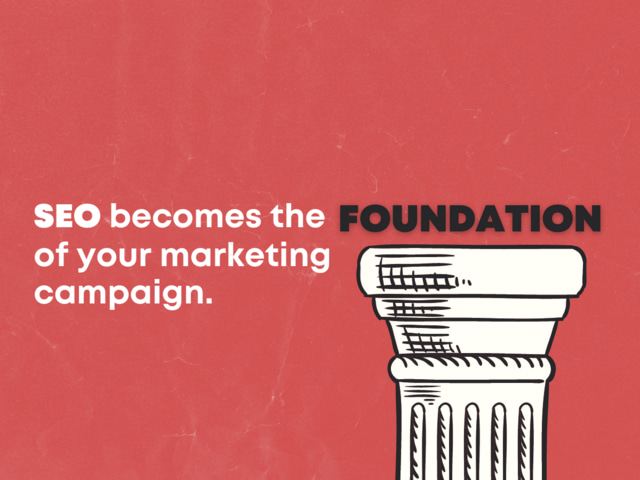
Why Ecommerce SEO Presents a Unique Challenge
SEO for ecommerce sites requires a special skill set and understanding. Whereas a service business has static pages with little crossover, ecommerce websites have pages that come and go. These pages often require updating and double-checking to determine if it matches the search intent.
Creating confusion in Google and other search engines is much higher in ecommerce companies. Every time you publish a page, it can affect your existing site rankings. Issues like thin content, duplicate content, and slow site speeds are often a result of excited ecommerce managers pursuing growth at an accelerated rate.
This creates more work for an ecommerce SEO agency like us. Before hitting publish on any page, our advice is to consider the impact your change has on SEO. What should you consider? This is exactly what you will learn, what you will learn in this article.
Types of Ecommerce SEO
Do you know what type of ecommerce site you have? Understanding the future of your ecommerce company establishes the right strategy for all search engine marketing, especially SEO. The following are the most common ecommerce website types.
Action: Before we move forward, decide which one (or more) of these categories you fit into.
Traditional Ecommerce SEO
It might sound old school, but opportunity is alive and well in traditional ecommerce. This type of ecommerce is when companies buy products from brands or distributors, then resell the products on their website. Some see this as a dead industry assuming direct-to-consumer is the only way, but they’re dead wrong.
We have fantastic clients doing amazing things with their SEO strategy in this space. The opportunities for traditional ecommerce websites differ from others. Also, not focusing on your product development also leaves more time for SEO and content marketing.
DTC Ecommerce SEO
SEO is often a forgotten form of digital marketing for direct-to-consumer brands. This is silly. Search engine optimization allows you to grab potential customers interested in your product category or niche.
It’s also a great way to find new product initiatives. All thanks to the data and traffic we receive through organic search.
Depending on your product category, you may find that SEO is the least competitive way to reach your customers when comparing digital marketing costs.
B2B Ecommerce SEO
Mail-order catalogs are not getting the job done anymore. There’s plenty of room for business-to-business brands looking for ecommerce success. The conversations with other businesses differ from direct to consumer, which opens the door to less competitive search terms in content marketing. To make the most of these opportunities, choosing the right crawler tool can help you discover the best keywords, analyze competitors, and ensure your site structure supports strong SEO performance.
A strong B2B ecommerce SEO strategy is creating content that serves your target customer. We will get into the details about content marketing, but over time, you will build trust, backlinks, and traffic to your product pages.
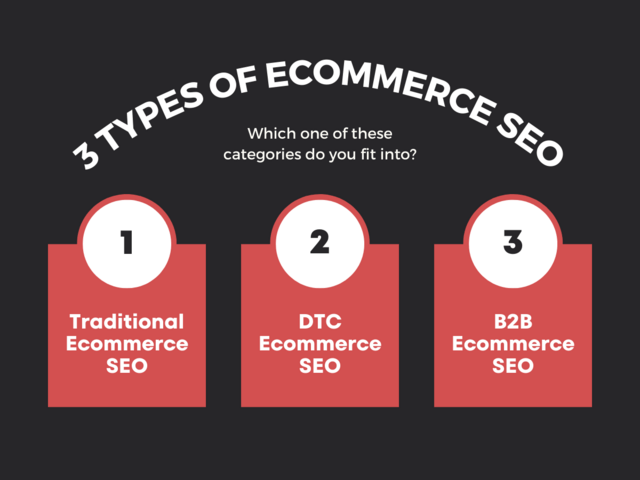
Choosing The Best Ecommerce Platform for SEO
Before we can dive into what all ecommerce SEO includes and offer tips and strategies to get you started, we have to figure out where your website will live. They do not build all ecommerce platforms for SEO success, so choosing the right one is important.
The best SEO platform for ecommerce sites doesn’t interrupt the many steps that search optimization requires. Here is a list of what we like:
WordPress
yep, that’s it.
What about Wix and Squarespace? While those platforms work perfectly for small businesses wanting an online presence, we do not recommend them for ecommerce companies looking to scale with SEO.
Shopify Ecommerce SEO
Since its inception, brands have understood Shopify to be an ecommerce platform. However, its initial design was more about landing pages and reducing the time between purchase consideration and the authorized payment button. Over the past several years, Shopify has stepped up its SEO game in a big way.
Now, you get the fast-moving functionality of Shopify within its secure and simple platform but with the features necessary for search engine optimization. Our Shopify SEO experts can help you get the most out of this platform.
WordPress Ecommerce SEO
What started for bloggers is now the most widely used platform on the internet. Now, ecommerce companies use WordPress to build a catalog of products using the WooCommerce plugin. While not as simple as Shopify, WordPress has the greatest amount of functionality for SEO.
SEO innovations apply to WordPress sites before others. Since it has such a large audience and an open-source concept, ecommerce SEO tools integrate with WordPress faster, and more plugins are available. Our WordPress SEO experts can help you navigate the many options and build your site in a way that is stable, manageable, and optimized for organic search.
What Are SEO Plugins?
SEO plugins are website integrations created by developers, allowing you to install them on website platforms with the click of a button. Some are free; others have one-time costs. The rest fall into the monthly or annual subscription business model.
On-page SEO for Ecommerce Websites
The most important thing you can do for your ecommerce site is to follow a complete on-page SEO process for every single page on your website. A common thing we see in ecommerce sites is having one somewhat optimized page (typically the home page) and a long list of poorly optimized pages.
It’s important to remember that every page matters for the success of your main product pages. If a page is unimportant, you either need to get rid of it or noindex inside of Google.
Here is an on-page SEO checklist for ecommerce sites.
Perform keyword research.
Analyze the competitors for ranking terms.
Set the URL to the best keyword.
Create a custom page description that covers the topic in full.
Optimize images to minimize page loading speed.
Add internal links to relevant products or pages.
Add a meta title and description, including the keyword and CTA.
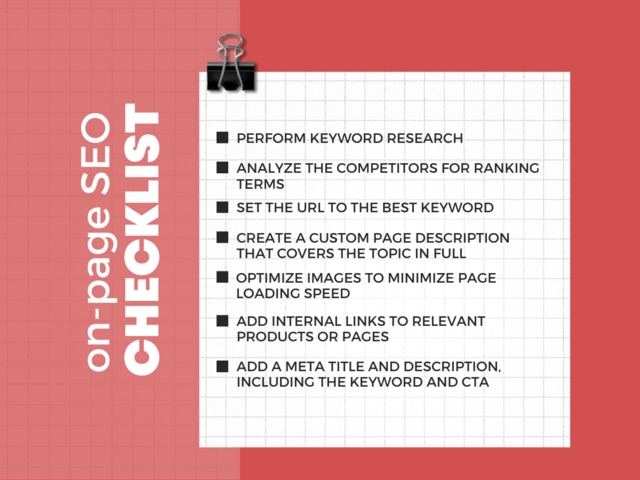
Ecommerce SEO Best Practices
Having worked with hundreds of ecommerce clients like you, here are the 7 most important best practices for ecommerce SEO.
Choose the best hosting possible to ensure your website has fast loading times.
Scan your website regularly for technical SEO and other website-related issues.
Do not copy and paste existing descriptions. Instead, rewrite the description in your own words.
Be careful not to create duplicate content between your category and product pages.
Keep your URL simple and with as few paths as possible. Here is an example of a large ecommerce company: mysite.com/HP/Computers/Desktop/Pavalon-1234.
Create alt tags for all your product images, describing the picture with relevant keywords.
Use internal linking to your advantage by hyperlinking anchor text helps Google understand your site.
Even ecommerce companies aware of these steps forget them more often than we would like to admit. At The Nine, we implement these steps into our SOP (standard operating procedures).
SEO FOR Ecommerce Product Pages
For many brands, ecommerce SEO optimization begins on a single product page when it becomes necessary to rank at the top of the Google search. Because of ambition or thanks to rising PPC costs, they assume that with a small fee and the stroke of the SEO brush, position one is theirs.
We get that, but the top position isn’t as easy as pay, optimize, and rank. Optimizing a single page will not guarantee the top spot in organic search. In fact, without the sitewide SEO fundamentals in place, it’s unlikely that you will reach the first page.
With that said, there are things you can do to optimize your product page in a way that the competition is not.
Create a new product description: We have discussed this, but not in enough detail. For traditional ecommerce websites, when you publish the stock product description received from a brand, It devalues your page to Google. First, to publish is owned by the brand, so the next best thing is to recreate the description entirely.
Keep the reviews coming: Reviews on your product page provide fresh to the search engines, telling them that your page is alive and active. These reviews are rich in keywords and often include the most current details that your product needs to be known for.
Create Custom Images: Using stock images or the original product image makes showing up in Google image search less likely. Creating custom images for your product pages looks better, but it creates the potential for more traffic. Create images that resemble the keywords you want to rank for.
Create interesting Meta Information: Showing up in Google search is the first step, but getting clicks is just as important. Create enough intrigue to get searchers to click your listing. Include the main keyword, and Google will make it bold when it matches the search.
Create a FAQ Section For Your Product: Go the extra mile and include all the frequently asked questions about the product. The FAQ makes sense both because it helps reduce abandoned carts and leads to Google-rich snippets and more search traffic.
Enhance the Page Experience: Adding an element of experience to a page is important anytime the page leads to revenues. Creating short video content and unique images throughout the page may compel a shopper to take an action. Prevent fatigue through a lengthy description by adding minor dopamine hits throughout the page.
SEO For Ecommerce Category Pages
We see thin content as a common problem for category pages. Sometimes these pages include a long list of products resulting in an accidental page 2 ranking in Google with no effort. If this happens by accident, imagine a category page's potential when SEO optimized?
When you have a keyword rich category page alongside a backlink and internal linking strategy, you end up with a delicious ranking recipe. Each category page needs as much care as given to your product page. This means custom images, filling out the title and meta description, and improving the page experience.
SEO For Ecommerce Blog Articles
Owners and managers of ecommerce companies have a misconception about blog articles. These articles are to serve their existing customers. True to an extent, but the greatest power with ecommerce blog articles is in exposure, not retention.
Your blog articles are an internal linking powerhouse. They allow you to push an internal link to every relevant category page and product page you mention. This internal link becomes stronger when that article ranks high in the Google search and earns backlinks from other websites and bloggers.
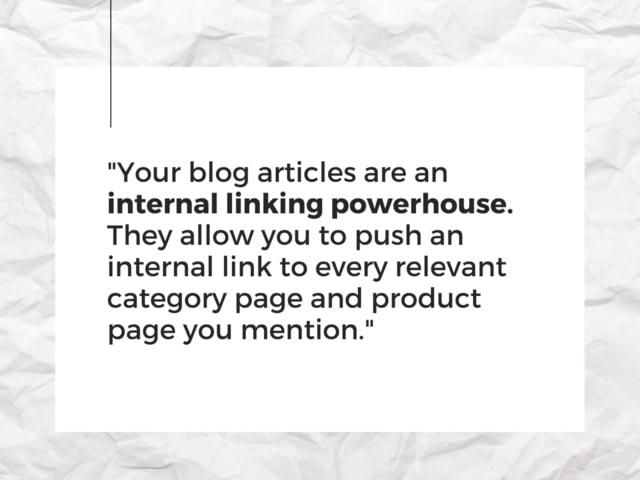
Blog articles also help to encourage topic authority, which is now a strong Google ranking factor. If you sell dominos, creating 20 articles about “how to play dominos” strengthens your authority on that product page. Therefore, it’s important to have a content strategy in place before you create article content.
Ecommerce SEO Tips
Now that you understand the fundamentals of SEO for ecommerce let’s go over specific tips that keep SEO moving at top speed. Here are our recommended SEO tips for ecommerce sites.
Perform Keyword Research For Every Page
Performing keyword research for every page helps the entire site rank for the keywords with the highest potential search volume. Only researching keywords for your top pages can negatively affect your most important pages. If you are unwilling to optimize a page, either get rid of it or not index it.
Take Content Marketing Seriously
It’s easy to miss the return on investment that content marketing gives your company. Since articles are not transaction pages like a product description, it’s common for an ecommerce website to invest minimally in writing and publishing these content pages.
Don’t let content marketing be a necessary evil. Instead, recognize the tremendous opportunity that each page presents. Build an engaging user experience, find every internal link opportunity, and ensure your meta description encourages people to click.
Watch For Duplicate Content
In ecommerce content marketing, duplicate content doesn’t mean accidentally publishing the same article twice. What it means are two articles that have the same search intent. For example, if you are a fitness equipment company selling a bench press machine, you may have articles about the best chest exercises. An article called “the 6 best chest exercises” and one called “the 7 best chest exercises” could prevent both articles from ranking well.
Instead of having several “OK” articles on a subject, merge the two into the most authoritative content on the internet.
Perform Technical SEO Audits Regularly
Things change quickly with ecommerce, which means a site audit is only accurate for a short period. Technical SEO has the potential to change fast, so monitor your website health in real-time and perform basic technical SEO audits once per month.
Action: It’s worth having a technical SEO expert come in and take a deeper look. This should happen approximately every quarter. Their expertise will help you understand the current changes in the SERP, including any rich snippets.
Dig For Link Building Opportunities
Ecommerce link building is a dirty job, but somebody has to do it. Great content alone won’t give you position one for tougher search terms. You need to build brand links and keyword-relevant backlinks to any important page on your site.
Backlink building often requires multiple strategies to be executed at the same time.
Create backlinks using anchor texts such as “best bench press machine” or “bench press machine with spotter arms.” This is called link diversity and is a natural fit for what search engines expect.
Need a Backlink Strategy? The Team at Nine.is are experts at building high-quality links for your website.
Send Social Signals
Social signals are small but important mentions of your brand and your products. We send signals through social media via your own profiles and others. Having your brand mentioned in a #hashtag is great for awareness within the social media search engine but also for Google.
Make sure you are active on the social media platforms you have time for. Use your blog articles as snippets for your social media posts. Don’t overthink it, do it.
Track Your Progress
Your SEO strategy is a developing plan that requires tracking, tweaking, and multiplying. Use free tools such as Google Analytics, Google Search Console, and plugins within your own ecommerce site. These tools are great for gathering important data that helps you get the most from your SEO strategy.
More than search volume and website traffic, these tools help you understand the time a potential customer spends on a page. They help you understand where they go after that page and how many people landing on it make a purchase.
Don’t Shoot Without Having a target
There’s never a guarantee with SEO, but you can reduce risk and increase wins by having a target to aim for. At The Nine, we use a predictability analysis that helps determine how much traffic your ecommerce site receives when performing the required tasks within laser-like accuracy. Much more than a traditional competitor analysis, we look at every important ranking factor for your competitors on-page, on-site, and online.
Advanced Ecommerce SEO Strategy
We’ve covered the fundamentals and provided the steps necessary for your ecommerce site to compete in the search engine. Now, it’s time to discuss a high-level SEO strategy for ecommerce sites. This integrates link building, content marketing, social media, and on-page optimization into one beautiful and profitable strategy.
Step 1: Choose Your Most Profitable Product
Starting with your single most profitable product sets the tone for the rest of your SEO campaign. Choosing a single product to focus on ensures that SEO energy leads to revenues rather than site traffic. Many agencies offer ecommerce SEO services, but their strategies often focus on visitors rather than dollars.
The way to move the SEO needle is by achieving profitability. This way, you can continue to scale the SEO budget as your strategy expands into wider areas.
Fact: This is a key mistake every business category makes for search engine optimization.
Step 2: Perform Keyword Research Around that Product
Again, this requires focus. Develop keywords that serve the single product. It’s easy to let your mind wander through this process. Be careful not to get sidetracked by the light bulb in your head.
If need be, put that idea on a notepad for a later time.
Don’t just look for direct transaction keywords when looking for product-specific keywords. Look for questions being asked and where the product is being discussed. Find lesser-known terms that make your page more descriptive and solve the reader's problems. This is good for topic authority and increasing the likelihood of a conversion.
Step 3: Perform a Competitor Analysis
A competitive analysis looks at keywords that your competitors are ranking for. This analysis gives you insight into what Google thinks is important about these pages. Often, you find terms you would not have considered with product-specific keyword research.
This information gets applied to your keyword research and includes longer tail keywords with lower but customer-specific search volume. Big win!
While you're here, do a backlink analysis to see exactly how many websites and the authority of those websites with links pointing to your competitors' pages. This gives you an idea of how much work you need for your product page to rank. We will get to that at a future step.
Step 4: Compare the competitor's on-page design
Page stickiness is important for maintaining a high position in search and leads to more conversions. Look at the competitor product pages to see the effort they’ve given to the on-page experience. What do their images look like? Do they have a dropdown FAQ? Are they allowing for unregulated reviews?
This helps you build a better on-page experience that prevents people from hitting the back button and returns them to Google. Hopefully, the on-page experience helps potential customers crush the add-to-cart button, converting visitors into buyers.
Want to go the extra mile? Create a brief YouTube video and place it on the product page. Place it after a few paragraphs to prevent slowing the page's loading speed but high enough to engage the visitor.
Step 5: Perform YouTube Keyword Research
YouTube is the second largest search engine; like Google, understanding their ranking algorithm leads to higher positioning. If you’re taking time to create a YouTube video about a product, you might as well optimize it for YouTube Search. This way, your YouTube ecommerce strategy isn't only for your existing audience and those who may be interested in your product.
Our agency has access to important keywords within YouTube. The result differs from traditional search engines. YouTube often has different long-tail keywords and search volume.
Step 6: Reach Out to Listicle and Comparison Bloggers
Look for “top, best of, vs., and comparison articles” where your product fits. Contact the person writing or running the blog and ask them to consider your product for their site. Let them know why your product is special and why it's worth mentioning on their site.
Tell them that once adding your product, you’d be glad to showcase this piece on social media and within email marketing.
Step 7: Build a Topic Cluster Around Your Product
Discussing topics around your product can be about the product category or any subjects you speak to a buyer about in consideration of a product like yours. This topic cluster includes internal links with various anchor texts pointed to your product page.
The internal links will benefit your product page rank thanks to the traffic your content receives. This pass-through ranking factor is one way to get ahead of your competition. Most take a lazy approach to internal linking.
Step 8: Set up a Retargeting Campaign
Not everybody is going to buy your product on the first pass. To solve this problem, set up a campaign specifically for this product, tagging the product page and the articles created for this product. For such a minimal cost, it only makes cents (get it?) to set up an ecommerce retargeting campaign and bring people back to your product page.
Step 9: Capture Reviews From Every Purchase
Do not, we repeat, do not leave reviews to chance. Reviews are how you bring new content to your product page without having to do a page update. Optimize your reviews so that Google catches the user-generated keywords that will positively influence your page rank.
With E.A.T. (expertise, authority, trust) score being a ranking factor, allow some of these reviewers to list their names and basic information. This is a theory, but there’s a chance that Google will recognize these names and consider the quality of the review.
Step 10: Repeat This Process
The way to get the most out of this strategy is by making it a company-wide rule. Agree that all products will go through this much effort during a product launch. Then, continue to nurture each product page to keep it at or climbing toward the top.
Maintaining this process for link building has a site-wide effect. If you can build 12 links to each of your 12 product pages, then you have a website with 144 backlinks. Here, the sum is greater than its parts.
Ecommerce SEO Checklist
Wow. We have covered a lot with this article. Is your head spinning yet? If so, not worry; here’s a checklist that you can follow to remind you about each of the points in this article.
Understand what SEO Is.
Recognize how ecommerce SEO is unique.
Identify what type of ecommerce site you have.
Choose the best ecommerce platform for SEO.
Complete all on-page SEO Steps.
Choose a fast hosting service.
Schedule regular technical SEO audits.
Create custom descriptions for all products.
Look for any potential duplicate content issues.
Keep URLs short, clean, and with the right keyword.
Add keywords within descriptions for all products and website images.
Include internal links within your pages with intentional anchor text.
Follow the advanced ecommerce SEO strategy for all products.
Ecommerce SEO Agency
Not interested in assuming the ecommerce SEO responsibility? We can help. The Nine is a digital marketing agency that helps ecommerce company’s like you see a significant increase in online revenues. Our team expertise, AI ecommerce tools, and content marketing capabilities, has a serious impact on your websites search rankings.
Our ecommerce SEO packages are complete with a pain-free but thorough set up process, real time agency/client communication, and the best reporting in the business. We are confident that you will find our SEO service to be the best money you’ve spent on marketing to date.
Contact us to receive a site audit and to learn more about our ecommerce SEO services.
*Disclaimer: Clicking on links that lead away from our website may result in us receiving a commission if you make a purchase or sign up for a service. However, this does not affect our reviews and comparisons. We strive to provide fair and balanced information to help you make informed decisions.

